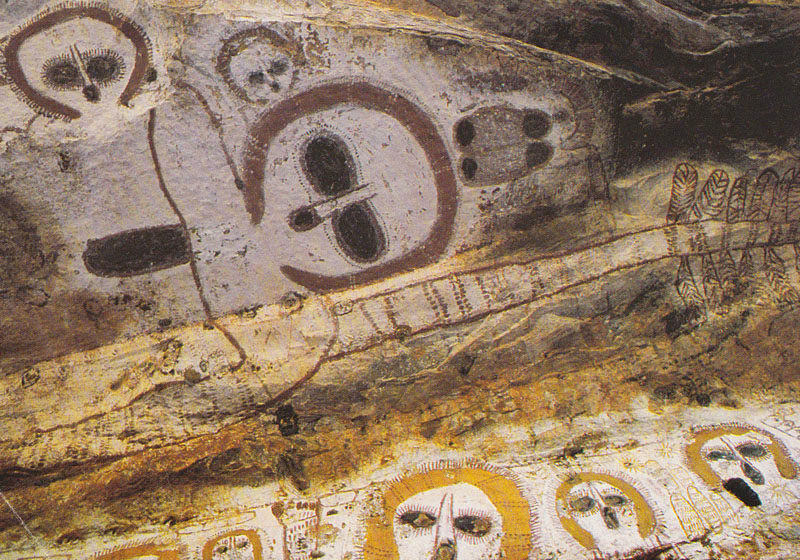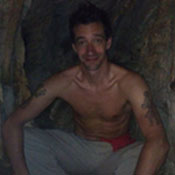These words of Wunambal elder David Mowaljarlai, in commenting upon a rock painting of Gunduran, a Rain Dreaming spirit, capture in microcosm the essence of the wandjina creator beings as understood by his people, the Wunambal of Donkey Creek in the Kimberley Range. These beings occupy a central place in the mythologies and teachings of the region, and are held responsible for the creation of many of the important landscape features in the Wunambal cosmos. Indeed, many Dreamings are told of these spirits, but the Dreaming in Aboriginal conception should not be thought of as mere liturgy or narrative, but rather as a unified nexus of story, landscape, ritual, ownership, genealogical history and magical creative action of the spirits about whom the Dreamings are told.
|
The Kimberley mountain range of northern Western Australia is home to a number of ancient rock art traditions. There is much debate as to the age of the earliest art in the region: 40,000 years is generally agreed upon but in the absence of accurate dating results (due in part to the great sanctity of the art in the eyes of the indigenous people) it is suspected to be older. Later there appear the famous Bradshaw paintings of shamanic rituals and ecstatic dances, which are called Gwion Gwion by the Wunambal and Ngarinyin peoples, dating to around 18 to 25,000 years before the present. The newest tradition, which began some 4000 years ago, is that of the wandjina, the creator spirits of the Dreaming, is still living, powerfully resonant in the local cultures and upheld by the Ngarinyin, Wunambal and Worora peoples. “When he’s bright, we have rain. He is happy, we keep renewing him, smiling all the time… When they are dull, they are unhappy and we have droughts because people don’t come to paint them.”
These words of Wunambal elder David Mowaljarlai, in commenting upon a rock painting of Gunduran, a Rain Dreaming spirit, capture in microcosm the essence of the wandjina creator beings as understood by his people, the Wunambal of Donkey Creek in the Kimberley Range. These beings occupy a central place in the mythologies and teachings of the region, and are held responsible for the creation of many of the important landscape features in the Wunambal cosmos. Indeed, many Dreamings are told of these spirits, but the Dreaming in Aboriginal conception should not be thought of as mere liturgy or narrative, but rather as a unified nexus of story, landscape, ritual, ownership, genealogical history and magical creative action of the spirits about whom the Dreamings are told.
1 Comment
|
ARCHAIC VISIONS
|




 RSS Feed
RSS Feed






